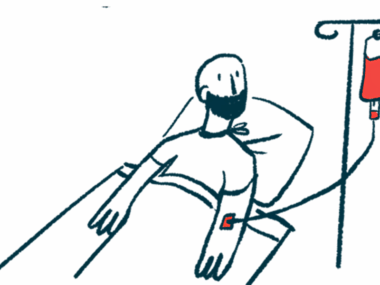Lobster to Cheese: Minimizing Stress While Moving Across the Country
Written by |

“Nope. That needs to go in the other box, darling. Don’t forget to label it the way I showed you, please.”
“I added dinner with your friends and a dump run to the calendar. Am I missing anything?”
Any idea what these conversation snippets are about?
If you guessed moving, you are correct! My husband and I live in Maine, just outside the coastal town of Belfast. We had an amazing opportunity to move to Wisconsin and jumped on it. Why? Well, why not?
The location will offer a similar climate to the one we’re accustomed to in Maine, and we will be closer to phenomenal medical facilities and resources, which is important given my myasthenia gravis (MG).
MG dictates much of what we can and can’t do, because maintaining my well-being requires dozens of considerations. Although moving can be scary even without major health issues, I was determined not to let MG affect the process. With a little grace, planning, and communication with one’s care team, moving halfway across the country doesn’t have to be out of reach.
Following are some tips and tricks I’ve learned from moving more than 30 times in 38 years that can help those of us with MG minimize stress.
First, communicate with your care team and develop a plan to transfer care and treatment.
I started by scheduling appointments with every member of my care team. (Telehealth appointments work, too!) Together, we updated my medications and I requested a three-month supply of each, if possible.
Then my primary care physician at the local Veterans Affairs clinic (VA) called the regional VA to begin transferring my care to Wisconsin. I also needed referrals for community care, or care provided by non-VA specialists, such as a neurologist who can treat my MG.
I scheduled new patient appointments with my new doctors, so that I can see them shortly after I arrive in Wisconsin. I gave them a heads-up about my complex medical needs, including monthly intravenous immunoglobulin (IVIG) infusions, and I made sure to schedule my last IVIG treatment in Maine for the week before our departure.
I’m also looking for a therapist in Wisconsin, but will continue with my current provider until I find a suitable match.
Yes, this is a lot. But writing it all out, making a plan to ensure continuity of care, and being prepared can relieve an untold amount of stress. And for those of us with MG, stress is not our friend.
The second thing to do when moving with MG is to be realistic about your capabilities. I am still recovering from having COVID-19 in January and switching to monthly maintenance IVIG treatments. This means my physical abilities are even more limited than usual. What I can do, however, is plan.
I have planned everything from final get-togethers with friends and family, to picking up the moving truck, to rounding up people who can help us load the truck — all while sitting in my recliner. I have planned our gas budget (which has increased, given the current gas prices), gotten a rough idea of where we can stop for fuel and potty breaks, and scheduled cancellation of utilities for our current house as well as start dates for the new one.
The third thing to keep in mind is the importance of communicating with everyone in your circle.
Ask your care team about any concerns you have about moving with MG. Discuss what you can and can’t do with your spouse, partner, or family in regards to moving preparations, and talk with your friends and family about any help you may need. Connect with local businesses in your new location to start building relationships. (Social media is great for this!)
Finally, remember to give yourself grace. You might not be able to lift the box or load the moving truck. Driving might be difficult, too. Instead of focusing on everything you’re unable to do, look for the things you can do while accepting those you can’t.
Set realistic expectations about what you’re capable of right now — not what you could have done in the past. Break out the pen and paper or the tasks list app on your phone and start planning.
And have fun and enjoy the new adventure! Moving doesn’t have to be a major life stressor. Embrace the change — I know I am. We head west on March 31.
Note: Myasthenia Gravis News is strictly a news and information website about the disease. It does not provide medical advice, diagnosis, or treatment. This content is not intended to be a substitute for professional medical advice, diagnosis, or treatment. Always seek the advice of your physician or other qualified health provider with any questions you may have regarding a medical condition. Never disregard professional medical advice or delay in seeking it because of something you have read on this website. The opinions expressed in this column are not those of Myasthenia Gravis News or its parent company, Bionews, and are intended to spark discussion about issues pertaining to myasthenia gravis.







Leave a comment
Fill in the required fields to post. Your email address will not be published.